Back to Journals » Advances in Medical Education and Practice » Volume 13
Medical Students’ Perception Towards Choosing Pathology Program at Jazan University, Saudi Arabia
Authors Alomaish AR , El Hassan LAM, Mahfouz MS , Haidar WN, M Omer HEO
Received 14 August 2022
Accepted for publication 28 November 2022
Published 10 December 2022 Volume 2022:13 Pages 1465—1474
DOI https://doi.org/10.2147/AMEP.S386194
Checked for plagiarism Yes
Review by Single anonymous peer review
Peer reviewer comments 2
Editor who approved publication: Dr Md Anwarul Azim Majumder
Abeer Rihan Alomaish,1 Lamyaa Ahmed Mohamed El Hassan,2 Mohamed Salih Mahfouz,3 Wejdan Nasser Haidar,1 Husam-eldin Omer M Omer2
1Faculty of Medicine, Jazan University, Jazan, Saudi Arabia; 2Department of Pathology, Faculty of Medicine, Jazan University, Jazan, Saudi Arabia; 3Department of Family and Community Medicine, Faculty of Medicine, Jazan University, Jazan, Saudi Arabia
Correspondence: Mohamed Salih Mahfouz, Department of Family and Community Medicine, Jazan University Faculty of Medicine, Jazan, Saudi Arabia, Email [email protected]; [email protected]
Purpose: The selection of a specific medical specialty is crucial to medical students and is increasingly associated with future job satisfaction and success in the medical field. We aim to evaluate the perception of medical students at Jazan University towards choosing pathology as a future career and the factors influencing their decisions in order to better the employability of graduates and provide information to both the labor force and curriculum designers.
Methods: An observational cross-sectional study was conducted among a random sample of (391) students at the faculty of medicine, Jazan University, from the 2nd to 6th year who registered as a formal student in the academic year 2021/2022. Data was collected via (web-based) a self-administered questionnaire because of COVID-19 pandemic. Chi-squared tests and regression analysis were performed.
Results: In this investigation, 92.9% of participants responded. Only 16.2% of undergraduates selected pathology as a future career choice. Among the participants who desired to choose pathology as a career, 28.6% preferred hematopathology as a future sub-specialty. Around 16% considered the most crucial reason for not choosing pathology is the preference for direct patient contact. The differences in age groups, academic level, GPA, and educational level of father between respondents who having a desire to choose pathology as a future career were found to be significantly different.
Conclusion: Among the respondents involved in this study, only 16.2% were interested in pathology, while 3.1% chose the field as their first future career choice. Our findings can be applied to help undergraduate better prepare for the future and encourage them to apply to the pathology program to address the shortage of pathologists in the area. Qualitative research is a need to explore the perceptions of current pathology residents and the reasons that can encourage them to choose this important specialization as a future career.
Keywords: undergraduate, career choice, pathology, digital pathology, medical curriculum, Jazan, Saudi Arabia
Introduction
The selection of a specific medical specialty is crucial to medical students and is increasingly associated with future job satisfaction and success in the medical field. Research suggested that a group of factors are responsible for the specialty choices among medical students. They range from individual characteristics to factors associated with medical curricula, perceived benefits, and the attraction of specific specialties.1–5
It is crucial in assessing the potential availability of doctors in various specialties as well as the workforce preparing for healthcare. Furthermore, a previous study found that students in the clinical phase of medical school are more likely than those in the basic sciences phase to choose a potential medical specialty.1 As a result of the introduction of many new subspecialties within conventional specialties, the range of career opportunities open to a medical graduate has expanded much further.2
Pathology is a medical discipline that establishes the scientific basis for all medical practice. The pathologist collaborates with all other medical specialties, using laboratory medicine methods (histology, cytology, biochemistry, molecular biology, and so on) to provide knowledge critical to clinical problem solving. The field of pathology allows one to choose a niche that fits his or her unique interests and needs due to its diverse and heterogeneous existence.3
The Faculty of Medicine, Jazan University (FOM, JU) was established in 2001, which adopted the integrated organ-system curriculum with community orientation. Three years ago, the Curriculum was reformed at the FOM, JU with a shift towards Competency-based type.
Teaching Pathology is limited to the second and third years, mainly in the organs system modules. This is conducted in the form of One-hour lectures, 2–3 times per week as well as Practical sessions and small group learning, mainly problem-based learning. Students in the 2nd year begin their encounter with Pathology in Foundation II module where teaching is centered around themes. After that Pathology is taught in all consequent modules up to third year.
Optional elective courses are offered at the end of third year. These are Cytopathology, Immunohistochemistry and Laboratory Medicine. The latter mainly focuses on Clinical Pathology. The total number of Contact Hours amounts to 415 in theoretical parts, whilst Practical sessions comprise 48 hours. Keeping in mind that morphological observation of specimens is highly significant to the learning and teaching of pathology curricula.4 This is the last encounter of students with pathology until they graduate. This gap could negatively influence the willingness of the graduates to apply for pathology clerkship programs.5,6 Factors that influence career decisions have been reported from medical colleges around the globe and other parts of KSA.2–5,8–17 The reason behind declining in applying to pathology program may be due to many reasons, including less patient interaction and the lack of visibility of Pathology as a discipline in the senior years, as well as the preference of medical students in choosing clinical specialties over Basic sciences where their perception as being Real doctors is overshadowed if they choose Pathology as a specialty.
The current pandemic has forced the National Health Service (NHS) to respond quickly to several challenges, one of which is the recommendation to operate remotely wherever possible. In this sense, histopathology poses its own set of difficulties, partially because certain aspects of the work, such as the handling of surgical and cytology specimens, simply cannot be performed remotely.7 The introduction of digitized images to pathology, on the other hand, has propelled this conventional discipline into what is now known as digital pathology (DP). Digital images and video streams can be exchanged in real time, bridging the physical divide (telepathology) between local clinics, colleges (second opinions), teachers and students, and home and workplace (home-office).8
To combat the trend of declining applications to pathology residencies by Jazan University medical graduates, it may be necessary to understand the factors and influences that may favorably or unfavorably affect the choice of pathology as a profession. Thus, the need for this study is to address the factors affecting medical students’ choice of pathology as a specialty here in the Southern region of Saudi Arabia, which will contribute ultimately in addressing the issue of shortages in pathologists in Saudi Arabia. The gap in the teaching of pathology at the Faculty of Medicine, Jazan University which is limited to the 2nd and 3rd year could negatively influence the willingness of the graduates to apply for pathology clerkship programs. Hence, this study aims to investigate the perception of undergraduate medical students at Jazan University towards choosing pathology as a future career choice and the factors influencing their decisions. The findings can help determine the future direction of the curriculum at our institution.
Materials and Methods
Study Design, Setting and Participants
A cross-sectional study design was adopted to recruit the study participants. The study was conducted among undergraduate medical student, Jazan University in Jazan-Saudi Arabia. Jazan University is a leading institution of higher education in the region with 26 faculties enrolling more than 50,000 students. Jazan region is one of the thirteen regions of the Kingdom of Saudi Arabia. It is located on the tropical Red Sea coast in southwestern Saudi Arabia. Jazan covers an area of 11,671 square kilometers, including some 5000 villages and towns. Attached to it are 100 islands, including the largest island of Farasan. Jazan region runs along the Red Sea coast for almost 200 miles (300 km). It is a highly populated state with a total population of 1.5 million. The research targeted Undergraduate medical student includes male and female at faculty of medicine, Jazan University from 2nd to 6th year. The main Inclusion criteria is being undergraduate medical student at medical college of Jazan University from 2nd (the survey was distributed after taking pathology module) to 6th year who registered as a formal student in the academic year 2021/2022. We excluded students at the first year as they still doing their basic science requirement.
Sampling Procedure
The sample size for this study was calculated to be 421 students using sample size formula for cross-sectional study design. We used n = [z2p (1 − p)]/d2], where: n = sample size P = the required proportion or attribute under consideration, 95% confidence interval and d the error. Using p = 50% as no prior knowledge about students’ perception or knowledge, the error not more than 5% (1.96 to a confidence level of 95%). This equation provides initial sample size of 383 and after accounting for non-response rate because we are using web-based survey which is characterized by high nonresponse rate we increased the sample size with a 10% non-response rate then the final sample size was 421 undergraduate students. For implementing the sample size plan, we used stratified sample technique to select students for the different an academic level.
Method of Data Collection, Study Tool and Variables
Data was collected using (web-based) a self-administered questionnaire because of COVID-19 pandemic. The study questionnaire contains 20 questions and based on similar studies conducted previously.9–14 The face validity of the instrument was assessed, and the instrument was reviewed by two pathologists. The developed questionnaire based on three major components. Firstly, sociodemographic data. Secondary, pathology choosing as a future career choice. Finally, estimates the level of knowledge about digital pathology among participants. Study outcomes were career choice of pathology, the knowledge about the digital pathology and the attitudes towards pathology as future career. The set of independent variables include demographic variables such as age, gender, social status, educational year, GPA. Using 20 questionnaires a pilot study was carried out to assess the tool’s reliability the Cronbach’s alpha statistics revealed that 0.782.
Data Entry and Statistical Analysis
The data collected was analyzed using the statistical package for the social sciences (SPSS) software SPSS Ver 20. Descriptive statistics was calculated for study variables (eg, frequency and percentage for qualitative variables and mean and standard deviation for quantitative variables). The Chi square test was used for evaluating some associations. The logistic regression model was also used and the corresponding ORs with their 95% CIs were also estimated for the independent predictors of the desire to choose Pathology as a future speciality. A p-value less than 0.05 was used to indicate statistical significance.
Ethics
Consent was prepared and given to all students participating in this study. It was made clear for the students that their decision to accept or decline participation in this study is completely voluntary and there is no link with their performance at the university. Ethical approval was obtained from the Jazan Research Ethics Committee with the reference number REC-43/02/003. All information was kept confidential and was not accessed except for scientific research purposes.
Results
The response rate in this study was 92.9% (391 out of 421). Table 1 provides background characteristics and the desire to choose Pathology as a future career for the study participants. Out of the total, 50.6% (198) were males. Students in the 2nd year wish to work in pathology as a future profession more than others (37.8%). A large proportion of undergraduates with CGPA between 3 and 3.5 (44.4%) preferred pathology as a future choice. The desire to choose Pathology as a future career differs significantly according to age groups, academic level, GPA, and mothers’ educational level (P < 0.05 for all).
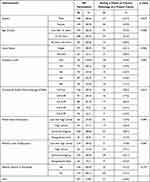 |
Table 1 General Characteristics of the Medical Students That Participated in the Research and the Desire to Choose Pathology as a Future Career (N = 391) |
Figure 1 demonstrates the preferred sub-speciality of pathology by the participants. Among the undergraduates who planned to pursue a pathology specialty after graduation, 28.6% 24.8%, 9.5%, and 8.2% would like to specialize in hematopathology, histopathology, medical microbiology and chemical pathology, respectively. The majority of respondents preferred either not to choose or preferred another choice of specialty other than pathology.
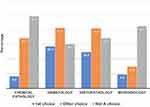 |
Figure 1 Sub-specialty of pathology preferred by medical students. |
Table 2 presents medical students’ perceptions regarding Pathology and Digital Pathology according to gender. The Table indicated that respondents’ views on awareness of the indications of intra-operative consultation were significantly different according to gender (P < 0.05). Reasons for not choosing Pathology as a future career ranged from having a negative impression considering pathology (5%) or were not sure to consider it or not (15%), followed by a preference for direct patient contact (16%) to almost half of respondents who favoured another speciality (47%) (Figure 2).
 |
Table 2 Medical Students Perception Regarding Pathology and Digital Pathology According to Gender (N = 391) |
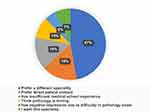 |
Figure 2 Reasons for not choosing pathology as future career. |
Figure 3 illustrates medical students’ attitudes towards pathology as a future career. Almost 46.7% agree or strongly agree that pathologists cannot interact with patients, while 41.7% also agree or strongly agree that pathology is a complicated subject. Only 18.6% agree or strongly agree that pathologists enjoy high salaries.
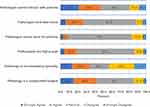 |
Figure 3 Medical students’ attitudes towards pathology as a future career. |
Regarding the reasons for choosing the medical profession, it was observed that there is a great opportunity for scientific research in this speciality, the community needs more experts in this speciality, which matches with my capabilities, and high chances of getting jobs in this field abroad were the most typical causes of choosing the future speciality among the participants (Table 3).
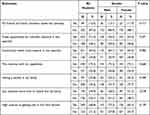 |
Table 3 Reasons for Choosing the Future Specialty |
Table 4 shows the logistic regression analysis for the independent predictors of the desire to choose Pathology as a future speciality. The analysis showed that the age group (21–23) years old are a statistically strong predictor of the desire to choose Pathology as a future speciality (OR = 0.465, 95% C.I: (0.24–0.92) p = 0.028). Pathology is not interesting Subject argument significantly reduced the desire to select pathology as a future career by 68% [OR = 0.32, 95% CI: (0.16-0.24), p = 0.001]. Pathologists do not interact with the patients also significantly affected the desire to choose pathology by 64%[OR = 0.36, 95% CI: (0.17-0.77), p = 0.009].
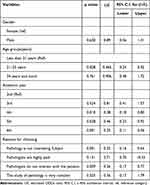 |
Table 4 Logistic Regression Analysis of Independent Predictors of the Desire to Choose Pathology as a Future Specialty |
Discussion
Choosing a specialization that would last as a career life is one of the most crucial decisions any medical student makes after graduation. In this study, we investigated medical students’ willingness to pursue pathology as a career in the future and the factors influencing those intentions. We found that participants preferred general surgery followed by internal medicine specialties. Our results are consistent with studies carried out in Botswana,15 Syrian16, Sudan,3 Bahrain,17 UAE,18 and KSA.11 Among the respondents involved in this study were shown that 16.2% interested in pathology; only 3.1% choose the field as their first future career choice.
Existing studies assessing the desire of undergraduate medical students towards pursuing pathology as a life career in Saudi Arabia provide a variable finding. A multi-institution investigation found just 5% of undergraduates declare pathology as their first choice in the future.12 An online investigation provided that the percentage of undergraduate medical students who chose pathology as their first choice for a future residency program was only 0.7, even though 8.7% of them thought about it.10
Comparing the findings of our investigation to similar international studies yielded several similarities. The determinants influencing specialization choice were examined using a nationwide survey of fourth-year US allopathic medical students. Around 27% of the respondents considered pathology as a potential career.19 A Canadian study discovered that about 9% of senior medical students in focus group discussions were actually interested in pathology.5 Another Canadian investigation revealed that 7.6% of clinical residents who responded to the survey had thought about going to the pathology program before deciding on other career paths.6 In a Nigerian survey, it was shown that 76.5% of participants showed interest in pathology; 18.8% chose the field as their first career choice post-graduation, followed by 5.9%, 3.5%, and 5.9% as their second, third, and tenth choices, respectively. Within the field of pathology, 8.2%, 4.7%, 3.5%, and 2.4% of respondents would like to specialize in histopathology, hematology, chemical pathology, and medical microbiology, respectively.13
The strongest aspect of this investigation is how it clarified the factors that can impact medical students’ decisions to choose pathology as a career in the future. The findings will help make future planning suggestions for Jazan University’s undergraduate medical students to increase pathology clerkship matching. Pathology is a less well-known speciality for undergraduate medical students. Because of the lack of guidance towards pathology specialty, there is a suggestion for creating a website to explore the pathology field and make it more familiar from students’ perspectives and throughout residency life. This could increase the number of applicants for pathology residency training programs. Integrating a pathology rotation to the surgery clinical rotation to enhance pathology exposure for undergraduate students this will provide a clear image of the everyday workflow and significance of pathology to the provision of health services.20 Instead of solely asking for the primary specialization selection, we asked for the top three options to better represent the preferences of the undergraduate. The results, however, cannot be generalized to other Saudi Arabian Universities. The study’s small sample size could impact the precision of the findings which is a limitation of this study.
Conclusion
In conclusion, it is very important for all medical students to select their future jobs depending on their own desire. The selection should not depend on the medical students’ parents’ desire and moreover the graduated students should not join what is just available in front of them of specialty at a certain time of their future life. It is well known that the output and the success of any person in a certain job correlate closely and directly to the degree of desire in his or her job. We aimed mainly in this limited research to discover as early as possible those medical students who really look for pathology as their first or second choice concerning their future career and then to help them keeping this own desire strong till they become members of that type of pathologists who like their job and who make a big difference in their community.
Through our research, we found an obvious regression in the students desire to choose pathology as a future career. About 37.8% of students within the third year showed a desire to pathology spatiality concerning their future career. That percentage regressed markedly for the sixth year students to become only 13.2%. We suggest an initiation of a medical students association for those who show an early real desire in pathology as a selected future career. The students in this association are expected to get closer to their teacher pathologists and to share them part of their daily duties, scientific discussions, researches, workshops, seminars…etc.
Firstly, we recommend to repeat this research locally after the initiation of the students association within a period of time not more than five years. Secondly, we recommend similar, but wider study that include medical students in other faculties of medicine within the kingdom of Saudi Arabia, especially if we succeed in expanding the experience of university students’ scientific associations, and to translate it into reality among them. Furthermore, similar future studies can be expanded more to include university students of other specialties, other faculties, and even other Saudi universities. Future jobs that based on own desires for all Saudi universities’ students will be a considered, real, nice change in Saudi society and in KSA development.
Acknowledgment
The authors would like to thank all the medical students who have sacrificed their valuable time to participate in this study.
Disclosure
The authors report no conflicts of interest in this work.
References
1. Dezee KJ, Maurer D, Colt R., et al. Effect of financial remuneration on specialty choice of fourth-year U.S. medical students. Acad Med. 2011;86:187–193. doi:10.1097/ACM.0b013e3182045ec9
2. Al-Fouzan R, Al-Ajlan S, Marwan Y, Al-Saleh M. Factors affecting future specialty choice among medical students in Kuwait. Med Educ Online. 2012;17:19587. doi:10.3402/meo.v17i0.19587
3. Ahmed Alawad AAM, Amil T, Darbi A, et al. Factors considered by undergraduate medical students when selecting specialty of their future careers. Pan Afr Med J. 2015;20:1–6. doi:10.11604/pamj.2015.20.1.5568
4. Gan S, Li R, Ha Y, et al. Clinical pathology clerkships contribute greatly to pathology education and residents recruitment: a randomized and prospective study from China. Med Ed Publish. 2020;9:45. doi:10.15694/mep.2020.000045.1
5. Hung T, Jarvis-Selinger S, Ford JC. Residency choices by graduating medical students: why not pathology? Hum Pathol. 2011;42:802–807. doi:10.1016/j.humpath.2010.10.018
6. Ford JC. If not, why not? Reasons why Canadian postgraduate trainees chose-or did not choose-to become pathologists. Hum Pathol. 2010;41:566–573. doi:10.1016/j.humpath.2009.09.012
7. Saigal P, Takemura Y, Nishiue T, Fetters MD. Factors considered by medical students when formulating their specialty preferences in Japan: findings from a qualitative study. BMC Med Educ. 2007;7:1–9. doi:10.1186/1472-6920-7-31
8. Pawelczyk A, Pawelczyk T. The effect of some factors on medical student specialty choice of non-primary care-a synthesis of the literature. Pol Merkur Lek. 2007;22:575.
9. Ayuob N, Sindi A, ElDeek B. Medicine as a career choice: a cross-sectional study on undergraduate medical students at King Abdulaziz University. Int J Res Med Sci. 2016;593–601. doi:10.18203/2320-6012.ijrms20160322
10. Al Nemer A. Undergraduate medical students’ perception of pathology. Ann Diagn Pathol. 2020;44:151422. doi:10.1016/j.anndiagpath.2019.151422
11. Guraya SY, Almaramhy HH. Mapping the factors that influence the career specialty preferences by the undergraduate medical students. Saudi J Biol Sci. 2018;25:1096–1101. doi:10.1016/j.sjbs.2017.03.019
12. Masuadi EM, Mohamud MS, Alhassan AM, et al. Factors and determinants of choosing pathology as a future career: results from a multi-institution study. Cureus. 2021;13:e15790.
13. Jombo GT. Pathology as a profession: contribution of undergraduate training on choice of career among final year students of a medical school in north central Nigeria. Niger J Med. 2006;15:309–313. doi:10.4314/njm.v15i3.37237
14. Bellis M, Metias S, Naugler C, et al. Digital pathology: attitudes and practices in the Canadian pathology community. J Pathol Inform. 2013;4:3. doi:10.4103/2153-3539.108540
15. Rukewe A, Abebe WA, Fatiregun AA, Kgantshang M. Specialty preferences among medical students in Botswana. BMC Res Notes. 2017;10:1–5. doi:10.1186/s13104-017-2523-y
16. Sawaf B, Abbas F, Idris A, Al Saadi T, Ibrahim N. Specialty preference and intentions to study abroad of Syrian medical students during the crisis. BMC Med Educ. 2018;18:1–9. doi:10.1186/s12909-018-1146-x
17. Mann-Isah NA, Ameen N, Jassim G. Career choices among medical students and factors influencing their choices. Glob J Health Sci. 2019;11:132. doi:10.5539/gjhs.v11n4p132
18. Abdulrahman M, Makki M, Shaaban S, et al. Specialty preferences and motivating factors: a national survey on medical students from five UAE medical schools. Educ Heal Chang Learn Pract. 2016;29:231–243.
19. McCloskey CB, Johnson K, Brissette M, et al. Factors influencing US allopathic medical students to choose pathology as a specialty. Acad Pathol. 2020;7:2374289520951924. doi:10.1177/2374289520951924
20. Lew M. Increasing medical student exposure to pathology by creating an integrated rotation during surgery clerkship. Acad Pathol. 2021;8:4. doi:10.1177/23742895211015344
 © 2022 The Author(s). This work is published and licensed by Dove Medical Press Limited. The full terms of this license are available at https://www.dovepress.com/terms.php and incorporate the Creative Commons Attribution - Non Commercial (unported, v3.0) License.
By accessing the work you hereby accept the Terms. Non-commercial uses of the work are permitted without any further permission from Dove Medical Press Limited, provided the work is properly attributed. For permission for commercial use of this work, please see paragraphs 4.2 and 5 of our Terms.
© 2022 The Author(s). This work is published and licensed by Dove Medical Press Limited. The full terms of this license are available at https://www.dovepress.com/terms.php and incorporate the Creative Commons Attribution - Non Commercial (unported, v3.0) License.
By accessing the work you hereby accept the Terms. Non-commercial uses of the work are permitted without any further permission from Dove Medical Press Limited, provided the work is properly attributed. For permission for commercial use of this work, please see paragraphs 4.2 and 5 of our Terms.
